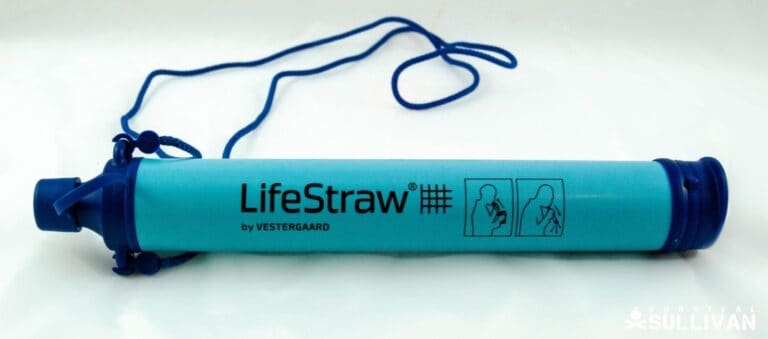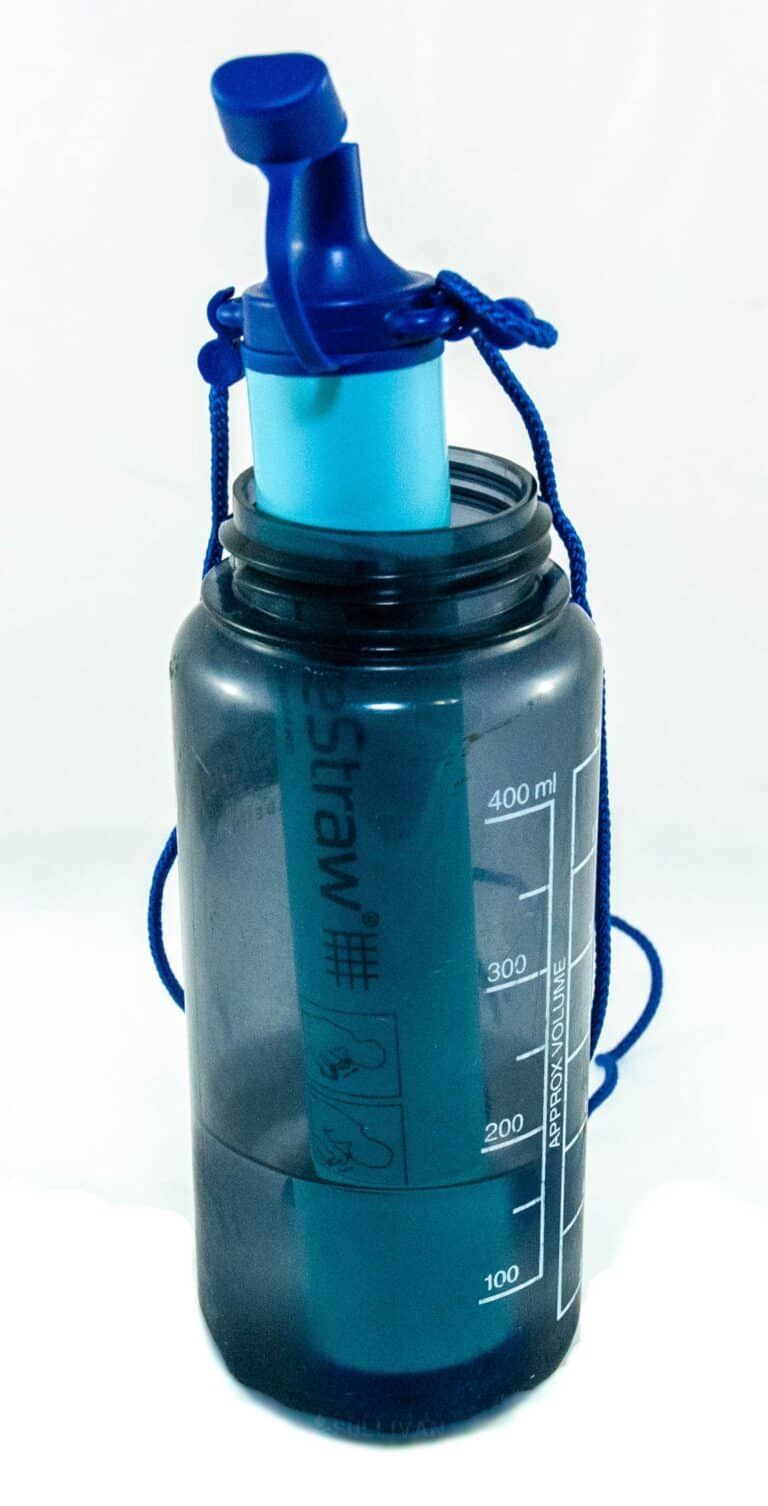One of the most game-changing inventions to come around in the past few decades when it comes to preparedness and prevention of water scarcity is the LifeStraw.

the Lifestraw personal water filter
Most preppers are already familiar with these ingenious, tube-shaped devices. They allow someone to drink directly, and safely, for nearly any questionable water source without worries about bacteria and most other contaminants.
Accordingly, it’s a great idea to have some on hand just in case you need them during an emergency. But this brings up an ever-important question: Do LifeStraws expire?
No, LifeStraws do not expire and do not have a definite shelf life according to the manufacturer. However, once activated and used the filter component is good for up to 1,000 gallons of water.
That’s the official answer, but as you might expect there is more you’ll need to know to make a practical determination on its longevity and storage life. Keep reading and I’ll tell you more down below.
Do LifeStraws Contain Perishable Components?
No, again according to the manufacturer Vestergaard. LifeStraws have a filter insert that is supposed to be shelf-stable and capable of lasting indefinitely in storage.
However, it is worth noting that other personal water filters, filtration appliances and similar technology do sometimes have a recommended use date of 5 years from the date of purchase due to the natural degradation of components used in their filters.
How Long Can a LifeStraw Stay in Storage Unused?
Indefinitely. The manufacturer of the original LifeStraw states that their product has an unlimited shelf life, and even once it has been used the filter will remain functional and viable until its maximum filtration capacity of 1,000 gallons has been reached.
How Long Will a LifeStraw Last Once it Has Been Used?
Again, theoretically, indefinitely. Vestergaard makes no mention of any shelf life or timetable in which a LifeStraw remains good after it has been used to filter contaminated water at least one time.
They specify that each filter unit in a LifeStraw has a maximum filtration capacity at which time water will cease to flow through it and it should be replaced.
Said another way, if you use your LifeStraw and then put it away, it should remain good for the foreseeable future until you use up the capacity of the filter itself.
Using the LifeStraw any number of times does not necessarily start a timer on when it will go bad if it is placed back in storage.

LifeStraw with water bottle
Will Mold or Other Contaminants Form in a Used LifeStraw?
Potentially, yes. Anywhere that water and biological contaminants are found there is the potential for mold to grow, and that includes in a LifeStraw. This is a risk factor particularly if it is not properly cleaned and maintained before being put away.
However, this won’t necessarily damage or degrade the performance of the LifeStraw or the filter. The manufacturer specifies that the 0.2 micron filtration insert removes 99.999999% of bacteria, 99.999% of parasites, 99.99% of microplastics, dirt and other solids.
So even if mold did form inside the LifeStraw, assuming this was happening inside or a head of the filter, it would not reach you when you drank from it.
That being said, both the manufacturer and your author here recommend in the strongest possible terms that you properly clean and maintain your LifeStraw after use to prevent such contamination and worries.
If You Use a Very Old Filter, is it Still Safe?
Yes, certainly if it is unused. And it is likely still safe even if it has been used, assuming water will still flow through the filter, and you take time to decontaminate the unit if it has been fully immersed or splashed with contaminated water or other substances.
When water stops flowing through your LifeStraw, the filter is no longer functional or effective and should be replaced. Obviously, never try and drink from a LifeStraw without a filter in it!
What Can You Do to Maximize the Longevity of a LifeStraw?
The best thing you can do to increase the longevity of these filters is simply to keep it in the factory packaging if you’re keeping it in storage for a rainy day. So long as it is kept in a reasonably cool, dry place, you should expect it to work perfectly even years in the future.
For any LifeStraw that you have made you so, if you’re not going to be using it for a time make sure you clean it and dry it thoroughly before storing it.
The manufacturer recommends blowing air back through the LifeStraw in order to help clean water out of the filter. As always, make sure you clean the mouthpiece and every other component specified by the manual that you can reach without risking damage.
Then, store it in a cool, dry, dark place. Your LifeStraw should be ready to use and effective in the future according to how much life is left in the filter, not how much time has gone by since the prior use.
Caution: Competitor Products Might Have a Shelf Life
One thing to note is that the LifeStraw, made by Vestergaard, is a distinct product from the many generic “life straw” water filters that look and even work similarly, but might be made to entirely different standards using different materials.
Accordingly, these units might actually have a shelf life, used or not! If you have a different kind of water filter, whatever the style and method of operation, make sure you check the manual or the manufacturer FAQ for details on shelf life.
The post Do Lifestraws expire? Setting Things Straight appeared first on Survival Sullivan.
https://www.survivalsullivan.com/do-lifestraws-expire/
 CampingSurvivalistHuntingFishingExploringHikingPrivacy PolicyTerms And Conditions
CampingSurvivalistHuntingFishingExploringHikingPrivacy PolicyTerms And Conditions
